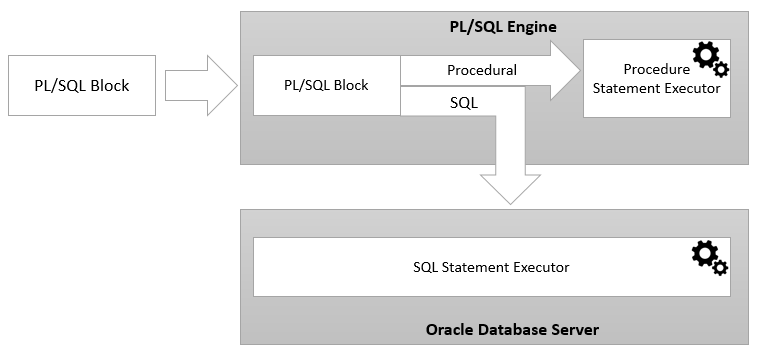
Summary: in this tutorial, you will learn about the PL/SQL program language and its architecture.
PL/SQL stands for “Procedural Language extensions to the Structured Query Language”.
SQL is a popular language for both querying and updating data in relational database management systems (RDBMS).
PL/SQL adds many procedural constructs to SQL language to overcome some limitations of SQL. In addition, PL/SQL provides a more comprehensive programming language solution for building mission-critical applications on Oracle Databases.
PL/SQL is a highly structured and readable language. Its constructs express the intents of the code clearly. Also, PL/SQL is a straightforward language to learn.
PL/SQL is a standard and portable language for Oracle Database development. If you develop a program that executes on an Oracle Database, you can quickly move it to another compatible Oracle Database without any changes.
PL/SQL is an embedded language. PL/SQL only can be executed in an Oracle Database. It was not designed to be used as a standalone language like Java, C#, and C++. In other words, you cannot develop a PL/SQL program that runs on a system that does not have an Oracle Database.
PL/SQL is a high-performance and highly integrated database language. Besides PL/SQL, you can use other programming languages like Java, C#, and C++.
However, it is easier to write efficient code in PL/SQL than other programming languages when it comes to interacting with the Oracle Database. In particular, you can use PL/SQL-specific constructs like the FORALL statement that helps improve database performance.
The following picture illustrates the PL/SQL architecture:

In this architecture, the PL/SQL engine compiles PL/SQL code into byte-code and executes the executable code. The PL/SQL engine can only be installed in an Oracle Database server or an application development tool such as Oracle Forms.
Once you submit a PL/SQL block to the Oracle Database server, the PL/SQL engine collaborates with the SQL engine to compile and execute the code. PL/SQL engine runs the procedural elements while the SQL engine processes the SQL statements.
Now you should have a basic understanding of PL/SQL programming language and its architecture. Let’s create the first working PL/SQL anonymous block.